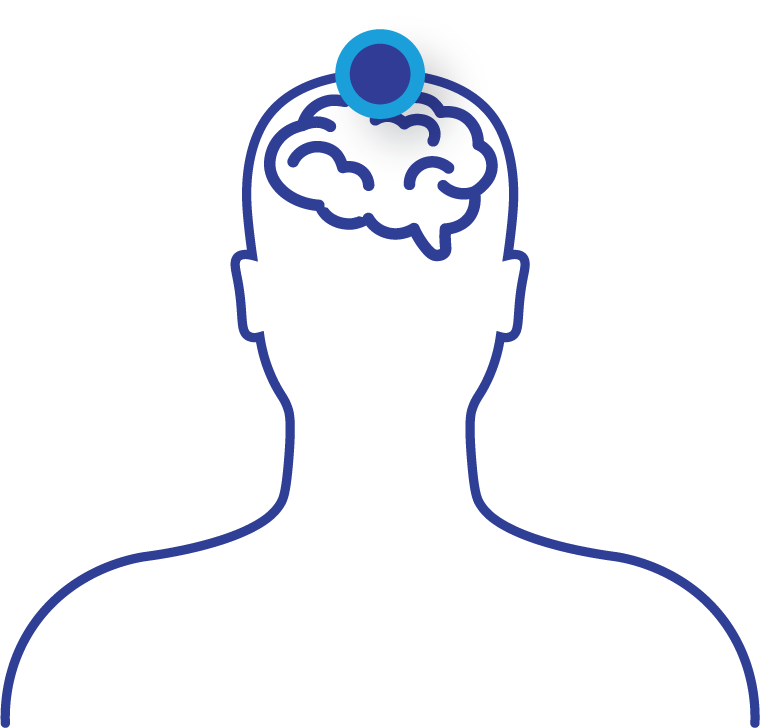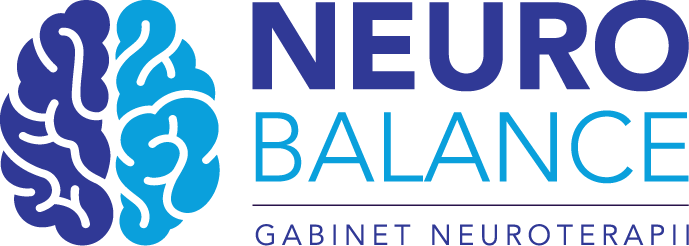FAQ
What is Biofeedback?
EEG biofeedback (neurofeedback) provides the patient with information about how his brain works and allows him to learn to control it. During the training session, the patient's brain activity is recorded, and the feedback (visual and auditory) is usually presented in the form of a computer game.
Biofeedback/neurofeedback training is based on the principle of operant conditioning, which involves rewarding a person for inhibiting certain brain waves and increasing others, depending on the level of cortical arousal. During most neurofeedback training protocols, an auditory or visual stimulus is used as reinforcement. Success (progress in the game) depends on whether the patient's EEG recording matches the parameters set by the trainer.
What is an EEG?
EEG, or electroencephalography, is a non-invasive and painless test. It involves the study of the bioelectrical activity of the brain. Neurons in our brain are constantly working, sending electrical impulses between each other, resulting in an electric current running through the brain in different directions. During the test, an electroencephalograph measures the voltage between the electrodes, amplifies it and draws it out in the form of continuous, sinusoidal lines. Simply put, the EEG measures the electrical activity of the brain, and thus the functional state of the central nervous system. The measurement is made using electrodes placed at appropriate locations on the head, which record changes in electrical potential from the activity of neurons in the cerebral cortex. The EEG test is a very practical diagnostic method can be repeated many times. Thanks to the test, we can observe how the recording of brain waves has changed under the influence of therapy/training.
Preparation for the EEG study
Do not take medications that stimulate or inhibit (e.g., sedatives, for sleep) the central nervous system during the day before the EEG. Drinking alcoholic or caffeinated beverages (coffee, strong tea, cola drinks or energy drinks) is also inadvisable.
What is a mini QEEG?
Quantitative EEG electroencephalography (QEEG for short) is a form of EEG analysis in which the underlying EEG activity is broken down into its individual frequencies using a computer and displayed graphically. Measured EEG metrics, such as frequency, amplitude and connectivity, can thus be displayed in the form of so-called "brain maps." In principle, it can be used for diagnosis and therapy monitoring in neurological or neuropsychiatric diseases, but is not used in everyday clinical practice.
What is Deep Cell Music Therapy?
Deep Cell Music Therapy is a Holistic method of working with people through sound. In Deep Cell Music Therapy, special camertones are used during therapy. Their wavelength is selected on the basis of scientific research to support recovery from various physical and mental illnesses. The effect of the sound wave has a very relaxing effect and significantly reduces stress in the body.
What's the deal with brain waves?
The brain produces different types of brain waves during different states. Certain brainwave frequencies are inhibitory, while others are excitatory. This means that stimulation of certain wavebands may be responsible for traits associated with overexcitability (e.g. fidgeting, hyperactivity and feelings of agitation), while others lead to traits associated with under-excitability (e.g. poor concentration, spaceiness and daydreaming).
Types of brain waves
As mentioned, different brain waves are associated with different states. Brain waves are measured in hertz (Hz), or cycles per second, and can vary over a wide range of variables. When slower brain waves dominate, we may feel sluggish, inattentive and distracted, and we may feel depressed or develop insomnia. When higher frequencies abound, we engage in critical thinking, hyper-alertness or anxiety, but they can also result in nightmares, hyper-vigilance and impulsive behavior.
Delta
Delta waves (1-4 Hz) are slow brain waves that begin to appear in the third stage of the sleep cycle, and dominate almost all EEG activity in the fourth stage. Healing and regeneration are stimulated at this stage and are considered crucial to the regenerative properties of sleep. Excessive delta waves when a person is awake can cause learning difficulties and ADHD, and make it very difficult to focus. People with various types of brain injuries have been found to produce delta waves during waking hours, making it extremely difficult to perform conscious tasks. Sleep walking and talking tend to occur when delta wave production is high.
Theta
Theta waves (4-8 Hz) are particularly involved in daydreaming and sleep. The theta cortex is often observed in young children, but in older children and adults, it tends to appear during meditative, dreaming or daydreaming states (but not during the deepest stages of sleep). When we are awake, excessive levels of theta can cause feelings of distraction or daydreaming, and is commonly reported in ADHD. Too much theta in the left hemisphere is thought to cause lack of organization, while too much theta in the right hemisphere results in impulsivity. Theta in people with attention deficit disorder is often seen more toward the front of the brain.
Alfa
Alpha waves (8-12 Hz) dominate in moments of calm thinking and similar meditative states. Alpha is considered the "power of now," being here and in the present moment. It is a resting state for the brain, not like a car standing at traffic lights. Alpha waves support overall mental coordination, calmness and alertness, mind/body integration and learning. Alpha tends to be highest in the right hemisphere, and too little alpha in the right hemisphere correlates with negative behaviors such as social withdrawal. This is also seen in people with depression, especially with too much alpha in the frontal area. Alpha is involved in active and adequate inhibition of irrelevant sensory pathways. Alpha is related to the allocation of resources in the cerebral cortex and is formed by a process of resonance between the thalamus and the cerebral cortex. If we consider the thalamus as the gateway to the cortex, then alpha can be thought of as the mechanism by which the sensory gate to the cortex can be closed.
Beta
Beta waves (12-38 Hz) represent our normal waking state of consciousness, when attention is directed toward cognitive tasks and the external world. Beta is the "fast wave" of activity and dominates when we are alert, attentive and engaged in problem-solving, decision-making and focused mental activity. Low beta (12-15 Hz) is considered "fast idleness," or muscular thinking, beta (15-22 Hz) is high engagement and actively figuring things out, and finally high beta (22-38 Hz) is highly complex thought, integrating new experiences, high anxiety or excitement. Continuous processing of high frequencies is not an efficient way for our brain to function and can cause tension and difficulty relaxing, and if present at night, can cause difficulty calming the mind and falling asleep. Beta waves tend to dominate the left hemisphere, and too much beta in the right hemisphere can be correlated with mania.
There are disagreements about how the three levels of beta and gamma share their territory in the brain. While it is widely agreed that higher beta frequencies are more correlated with arousal, some have convincingly suggested that they are mainly the result of a muscle artifact. For example, Helleter et al. found that anxiety was strongly correlated with elevated beta levels in the right hemisphere, and more recent work has found that insomnia is correlated with higher beta frequencies in the temporal lobes, and migraines are associated with central high beta levels.
Gamma
Gamma brain waves have the highest frequency of all brain waves, oscillating between 30(ish) and 100 Hz. They are associated with peak concentration and high levels of cognitive functioning. Low levels of gamma sensitivity have been linked to learning disabilities, impaired mental processing and limited memory, while high gamma activity is correlated with high IQ, compassion, excellent memory and happiness.
BRAIN ACTIVITY (EGG)
Epsilon to 0.5Hz
Delta 0.5-4Hz
Theta 4-8Hz
Alpha 8-12Hz
SMR 12-15Hz
Beta 1 15-20Hz
Beta 2 20-35 (max40)Hz
Gamma 40-200/s Hz

